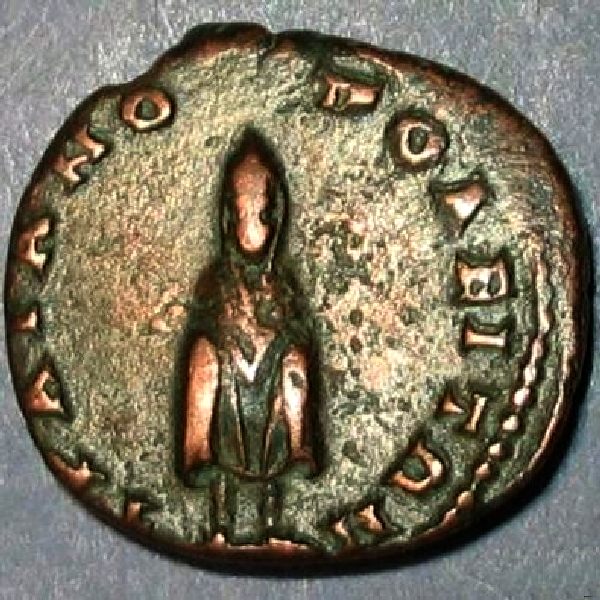 |
|
Schönert-Geiss 146 (V 67/R 124) Moushmov 5041
|
TELESPHOROS - who carries the goal - the perfector who brings the end of suffering, the genius of recovery who helps to find a happy ending to any project ... Telesphorus was thought of as the genius of the hidden or secret life force, or as a deity who protected the convalescents against relapses into their previous illness, often alongside the Aesculapius, or between him and the Hygiea "as a small, barefoot boy covered in a mantle and covering his head with his cap, which signifies the hidden and mysterious, almost veiled power which the boy represents, may also be expressed by the fact that the greatest caution is exercised in recovery in the clothing ".
He joined Asklepios late than his 'rice' or 'son'. It was introduced by oracles at the end of the 1st century. A.D. in Pergamon, from where his cult spread quickly. He interpreted the dreams to the Greeks: the healing sleep in the temple with its medically meaningful dream - an important element of ancient medicine.
Because of its small shape and hooded cloak, Telesphoros is identical to genii cucullati, which were fertility, healing, and even gods of death. Cucullus is the hood. They are probably ancient Celtic deities.
www.symbolon.de/books2003/olymp.htm
Telesphoros was worshiped primarily along the coast of Asia Minor and in the Black Sea basin. Related to him is EUAMERION, the demon of the "good day", d. H. the happy crisis of the disease. Temple in Smyrna and Pergamos.
... in the third century AD, ancient deities in Europe are still ubiquitous - in politics, in medicine. 700 years after HIPPOKRATES the separation of medicine and theology is still not done correctly ...
The personified cupping head?
"In the Greeks, the cupping head was a sacred symbol of Asclepius cult (god of healing), whereby the bell-shaped instrument itself was raised to the deity Telesphoros and was imprinted on numerous coins"
www.medicina-naturista.ch/geschichte_schroepfen.htm
The coin presents an exquisitely preserved coin, made under Emperor Caracalla [* 188; Emperor of 211-217 AD] in the province of Thrace in Trajanopolis [today Rekna Devia / Bulgaria] was coined (so-called provincial coinage):
obvers: Bust with laurel wreath AUgustaTrajana K Marcus AURelius Caesar - [ANTONEINO C].
reverse: Telesphoros standing, [TRAIANO-POLEITON] (imprint).
Finally, a curiosity: Caracalla (real Caracallus) was a nickname, which the emperor received after 213 after a long Celtic hooded coat. Consequently, we obvers see an Emperor with Celtic cloak, reverse a deity with the typical Celtic cape coat.
To the question, why this God appears on so many coins, I could not find anything reasonable. Did the ruler in question wish to imply that he, like Telesphorus, was the perfector, the great man sent by history to finally fulfill all the longings of the people?
|




